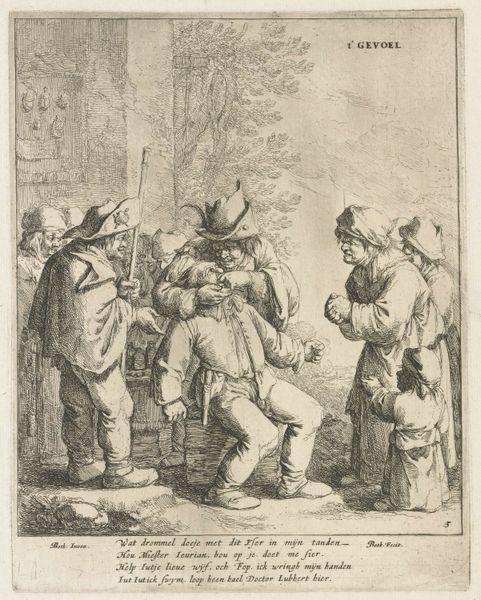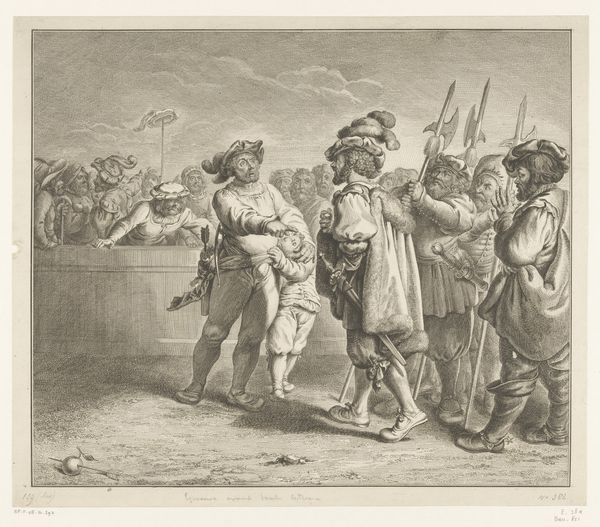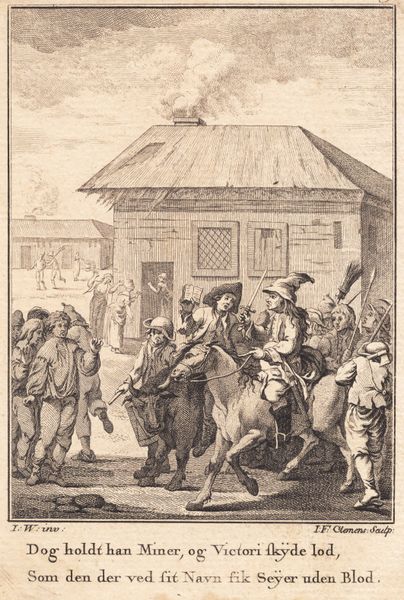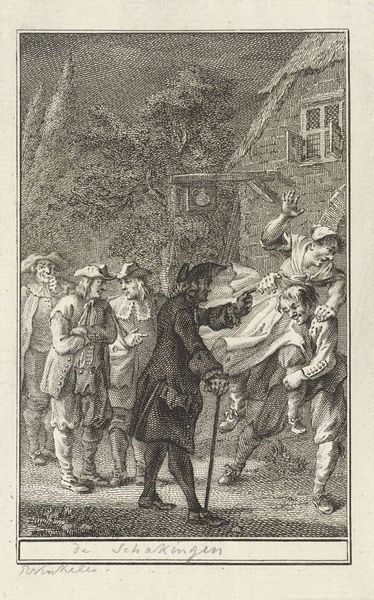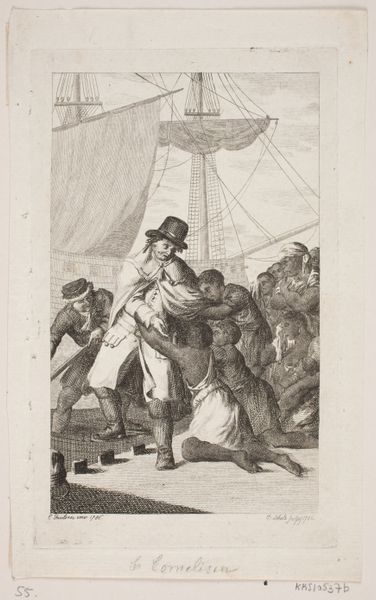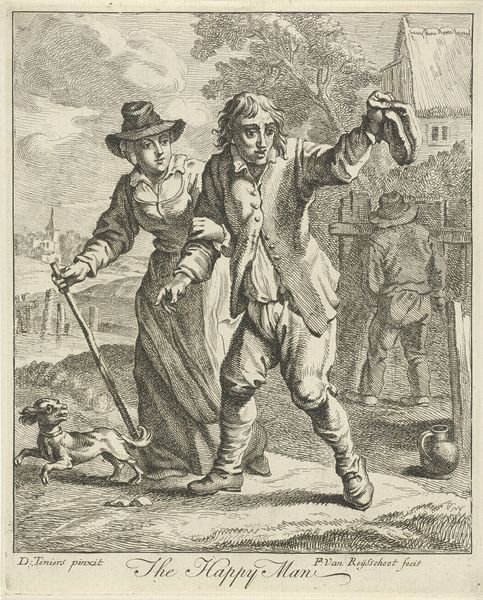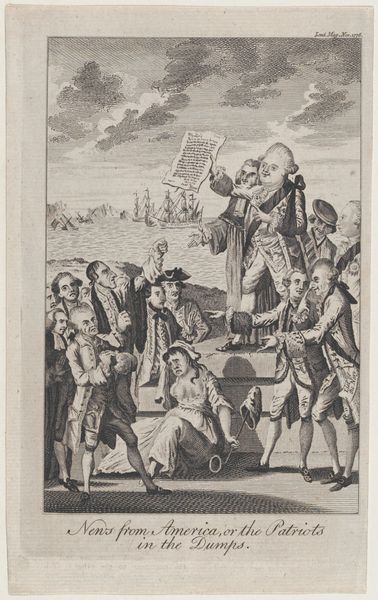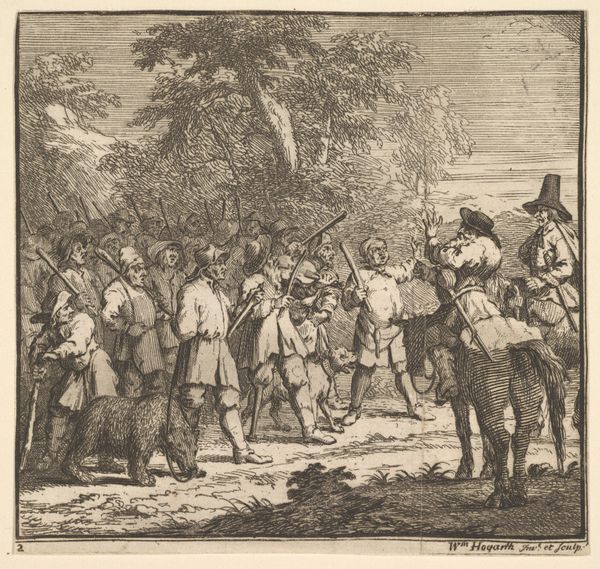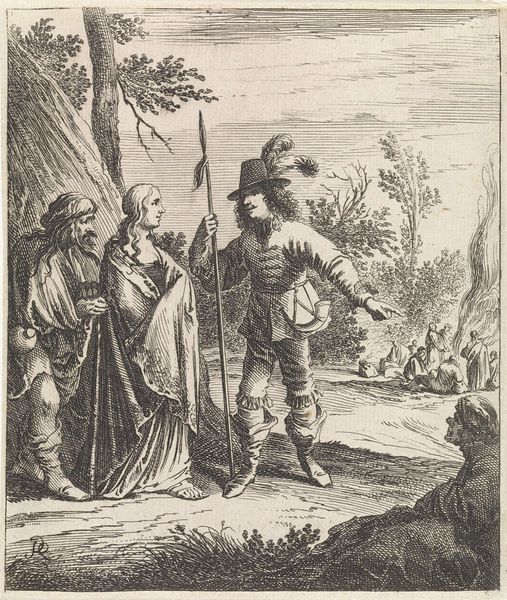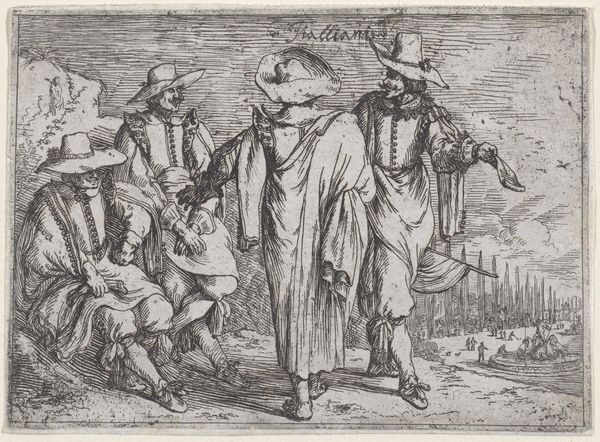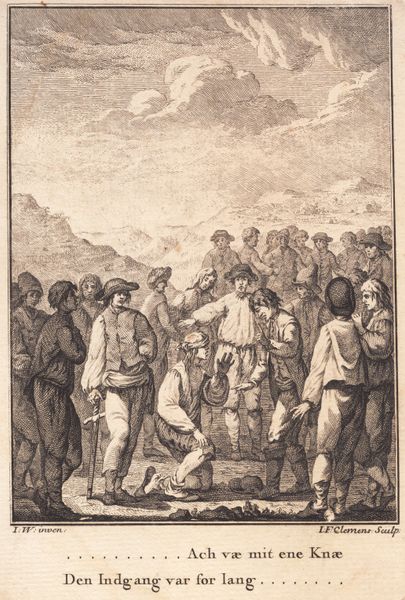
Dimensions: 163 mm (height) x 108 mm (width) (plademaal)
Curator: I'm immediately struck by the stark contrast in tones—a drama unfolding in monochrome. The faces are so expressive, a mixture of concern and avarice. Editor: Indeed. What we’re observing here is an engraving by J.F. Clemens, made sometime between 1770 and 1772. The piece is entitled "Peder Paars efter strandingen paa Anholt", which translates to "Peder Paars after the shipwreck on Anholt". Curator: "Shipwreck" carries immense symbolic weight, doesn't it? The chaos, the loss, the sudden disruption of fortune... it’s a potent image of vulnerability. What can we infer from the survivors' expressions? Editor: Consider the context: this work, now residing in the Statens Museum for Kunst, visually interprets a famous satirical poem by Ludvig Holberg, published in 1719, about a merchant's misadventures. It's social commentary cloaked in a journey narrative. The men's reactions vary – some display what seems like opportunism in the face of disaster, others appear genuinely distraught. Clemens, as the engraver, captures those nuances, suggesting a commentary on human nature itself in times of crisis. Curator: The figure on the left especially arrests my attention. The downcast expression, darker garb—he is set apart, hinting perhaps at societal marginalization? What relationship does that character have to the narrative and how might period prejudices come into play here? Editor: That figure could represent a local inhabitant of Anholt, encountering the shipwrecked crew. These works, even while portraying fictionalized accounts, illuminate power structures of the 18th century. Consider that printmaking also facilitated wider circulation, shaping public opinion on seafaring merchants, their perceived behaviors, and ideas about class in general. Curator: A crucial point about dissemination, and about art’s impact as social history. It’s not simply a static depiction, it actively took part in molding narratives and reinforcing values of the era. Editor: It's fascinating to trace these echoes through time, recognizing the lingering relevance of class consciousness. Curator: Precisely. The power of art lies in revealing, through symbol and story, our perpetual negotiations with history's enduring legacies.
Comments
No comments
Be the first to comment and join the conversation on the ultimate creative platform.
